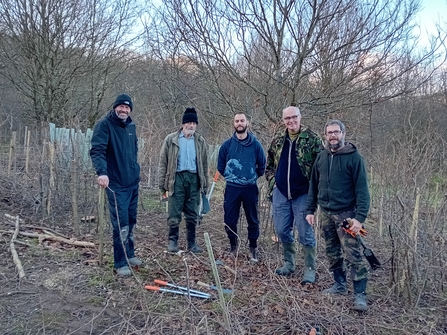
Volunteers coppicing at Juliet's Wood. Image by Callum Williams.

Volunteers coppicing at Juliet's Wood. Image by Callum Williams.
The ancient semi-natural woodland in South Northumberland is home to birds such as woodpeckers, barn, tawny and little owls, roe deer, hares, stoats, weasels, white-hairstreak butterflies that only feed on hazel and elm trees and woodland flowers.
The team from the wildlife charity have braved the elements over the past eight years to cut blocks of hazel and elm trees down to ground level, known as coppicing, to promote regeneration and create a mosaic of different habitats.
The elm trees, many of which were planted over 14 years ago, are a wonderful food source for a nearby population of white-letter hairstreak butterflies that are protected under the Wildlife and Countryside Act, 1981, that only feed on that species of tree.
The work is also part of its ongoing attempts to stop them growing too big and becoming targets for the beetle which spreads Dutch elm disease.